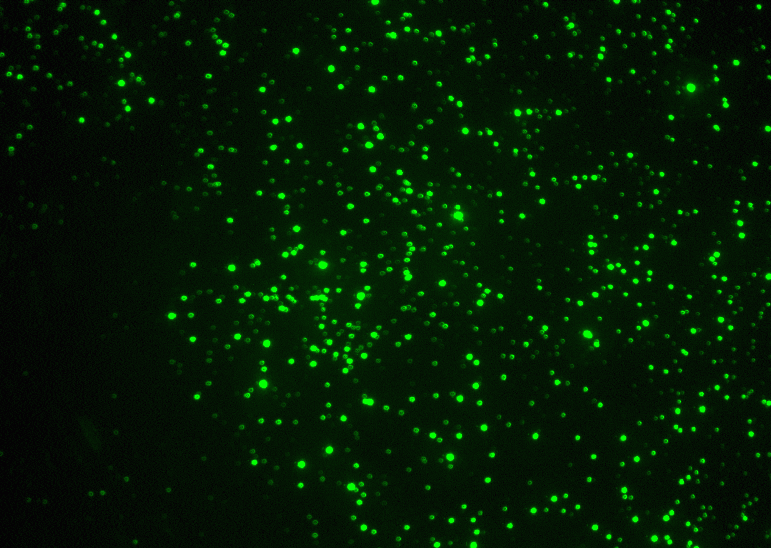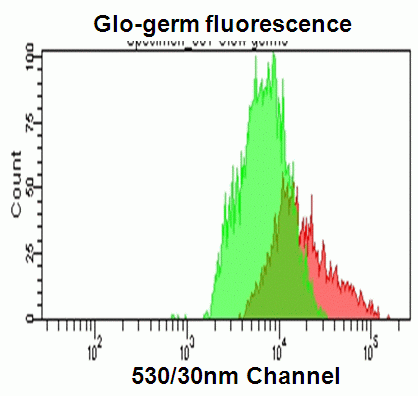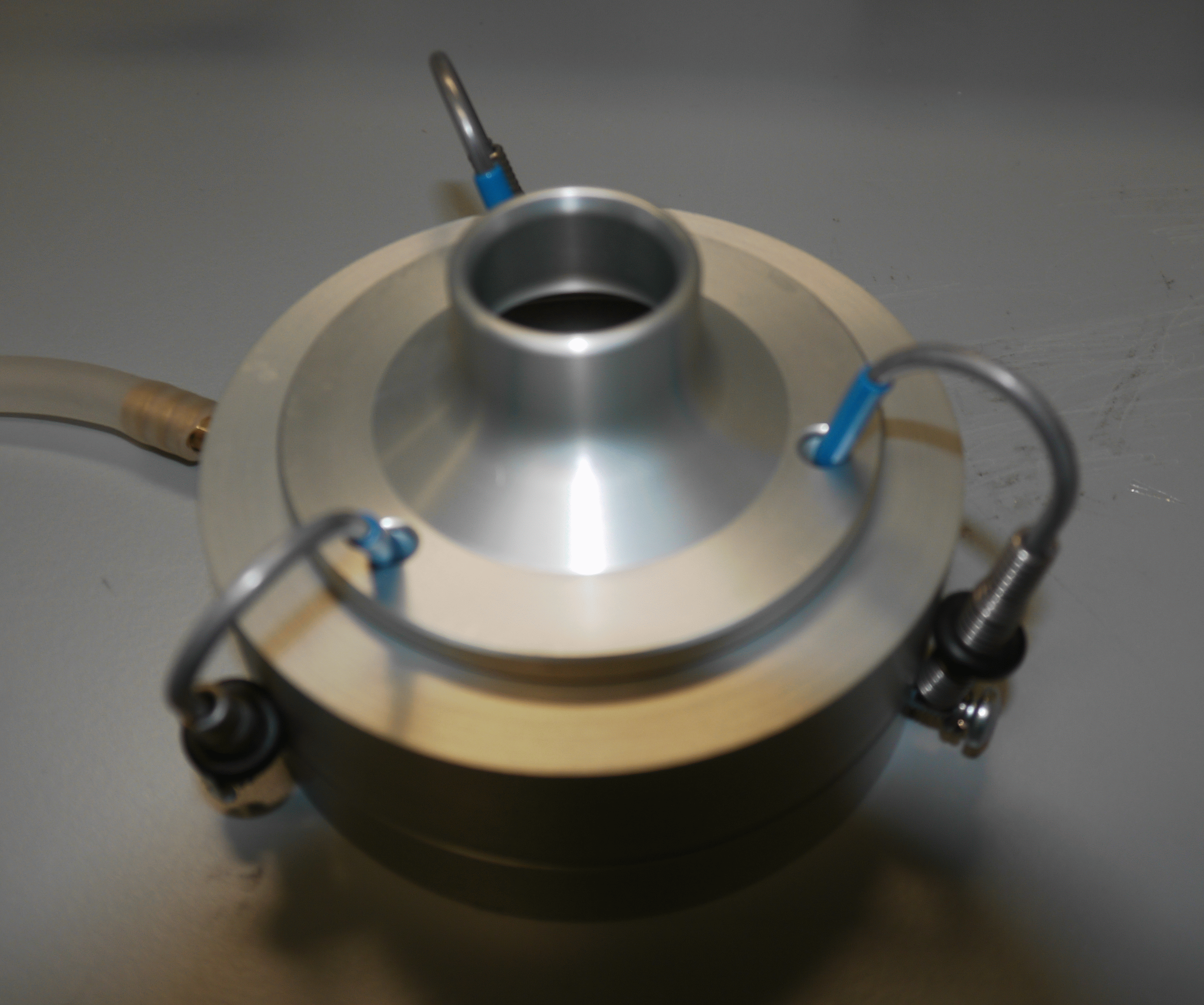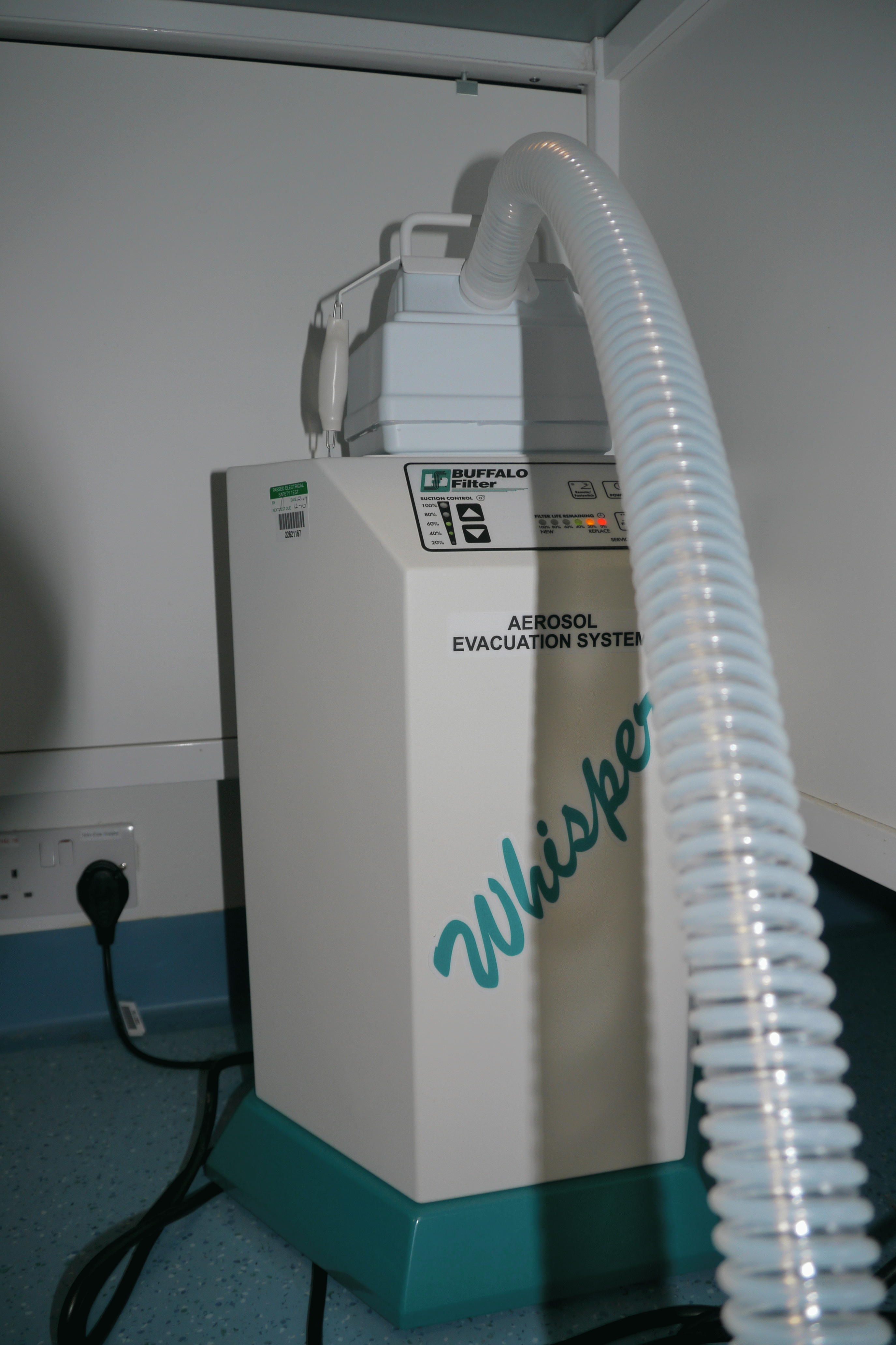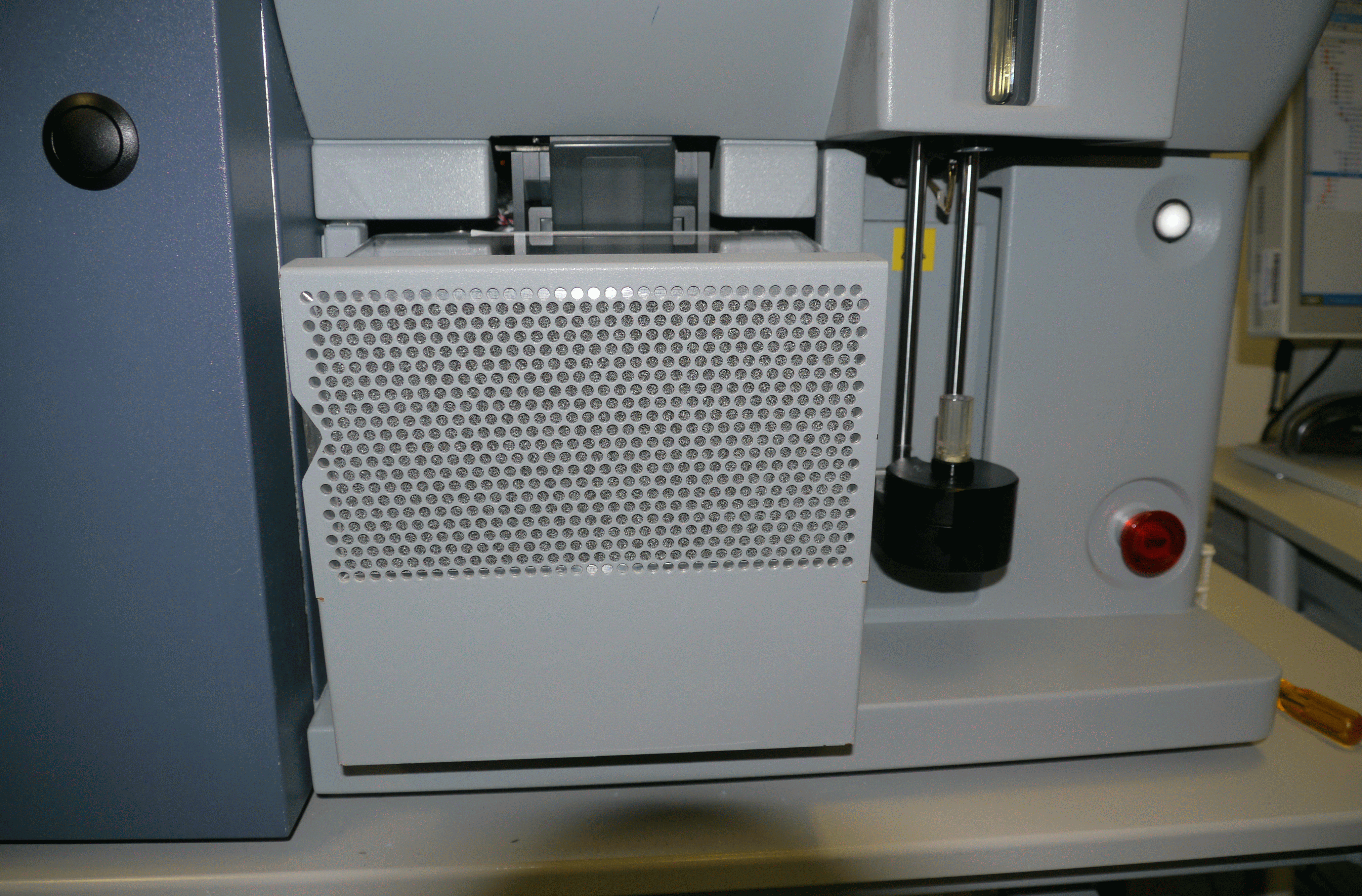Aerosols generated in sorters can easily escape into the external environment where the instrument operator is working. Even in modern digital cell sorters with multiple door arrangements there is still a bio-safety risk especially when blockage of the instruments saline stream occurs resulting in generation of more aerosols.
Class II containment of flow cytometric cell sorters can be achieved by placing the whole instrument in a Class II cabinet. However this is a costly process and there are other arrangements that can be employed depending on the biosafety risk posed by a particular viable human cells. For those infectious agents not spread by aerosols a level of biological containment close to that of Class II (UK) can be achieved on modern cells sorters such as the BD FACSAria.
The BD AMS or Aerosol Management System applies an air flow rate to the sorter which can be measured at the front of the sort chamber, (fitted with an air-filter) by standard air-flow methodologies applied to Class II cabinets. A negative pressure within the sort chamber was measured equivalent to that detected in Class II cabinets, thus offering the operator a defined level of protection. The AMS system is also fitted with a single HEPA filter (not UK standard but EU/US standard) which collects aerosols from the sort chamber by a series of tubes. The AMS system monitors the effectiveness of each HEPA filter and indicates to the user that the filter unit requires replacement. These HEPA filters units can then be removed to a clinical waste yellow bag for disposal.
To monitor the effectiveness of the AMS system in protecting the Cell Sorter Operator the level of leakage of contamination should be monitored weekly by use of glo-germs and an air-sampling unit (EMLAB P&K, Phoenix, AZ). Glo-germs were diluted and filtered with a 70um cell strainer and sorted into 5 ml tubes. A microscope slide was fixed into the air-sampler chamber and placed on the cell sorter chamber under vacuum applied by a standard laboratory vacuum pump. After 15 min sorting the microscope slide was removed and analyzed for glo-germs across the whole slide. This was repeated for normal use with the air-sampler placed on the desk used by the Cell Sorter Operator. The whole process was repeated with the stream shut off while sorting glo-germs. On a BD FACSAria this releases the sample tube from the sorter but this was found not to result in an increased threat to the operator by Glo-germ testing. The degree of glo-germ contamination of microscope slides should be less than 3 per slide over a 15 minute sampling period (SP Perfetto, DR Ambrozak, RA Koup, M Roederer 2003)

